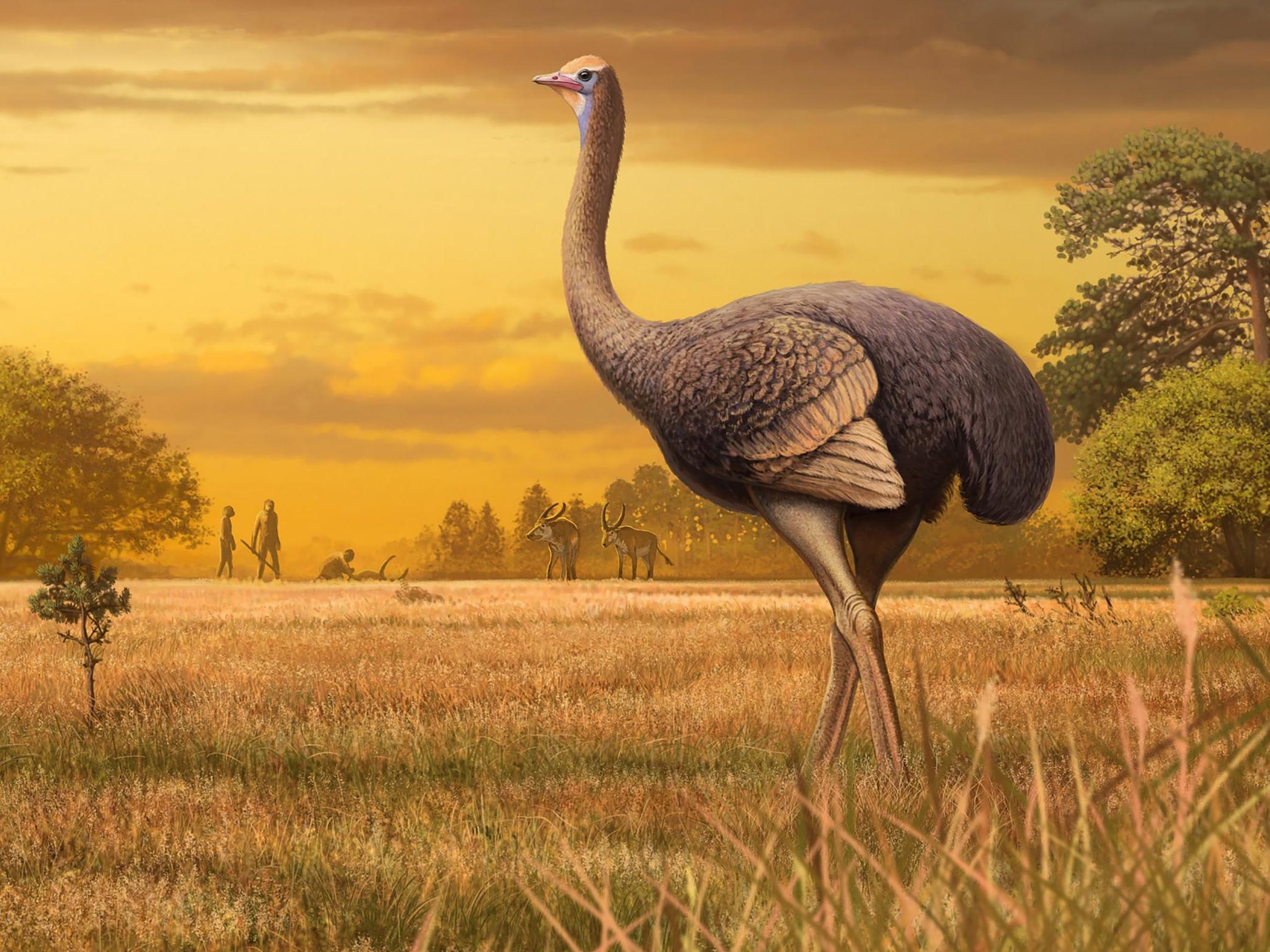Enormous prehistoric bird that weighed the same as polar bear is discovered in Crimean cave
Giant creature lived alongside similarly large Ice Age carnivores like giant cheetahs, hyenas and sabre-toothed cats

A giant prehistoric bird that weighed the same as a polar bear has been discovered in a Crimean cave on the coast of the Black Sea.
The 450kg flightless creature lived around 1.5 to 2 million years ago and may have been a source of meat, bones, feathers and eggshells for early human hunters.
At 3.5 metres tall, is was around three times the size of today’s ostriches and therefore would have been fiendishly fast.
Speed may have been essential to its survival as it would have lived alongside massive Ice Age carnivores such as giant cheetah, giant hyenas, sabre-toothed cats.
Pachystruthio dmanisensis, was already known but scientists had not realised quite how large it was, according to a paper published in the Journal of Vertebrate Paleontology. It was previously thought that such gigantic birds only ever existed in Madagascar, New Zealand and Australia.
“When I first felt the weight of the bird whose thigh bone I was holding in my hand, I thought it must be a Malagasy elephant bird fossil because no birds of this size have ever been reported from Europe. However, the structure of the bone unexpectedly told a different story,” said lead author Dr Nikita Zelenkov from the Russian Academy of Sciences.
“We don’t have enough data yet to say whether it was most closely related to ostriches or to other birds. This formidable weight is nearly double the largest moa, three times the largest living bird, the common ostrich, and nearly as much as an adult polar bear.”
Elephant birds were hampered by their great size when it came to speed, but the femur of this current bird is long and slim, suggesting it was a fast runner.
The oldest hominin site outside Africa is in the town of Dmanisi in Georgia which is near the Taurida cave where the giant bird was found.
Scientists say the bird may have been typical of the animals found at the time when the first hominins arrived in Europe. The bird would have probably reached the Black Sea region via the Southern Caucasus and Turkey.

“The Taurida cave network was only discovered last summer when a new motorway was being built. Last year, mammoth remains were unearthed and there may be much more to that the site will teach us about Europe’s distant past,” said Dr Zelenkov.
The bird might have grown so large because the environment was becoming increasing arid as the Pleistocene epoch approached.
Animals with larger bodies have lower metabolic demands which means they can make use of less nutritious food growing in open steppe.
Join our commenting forum
Join thought-provoking conversations, follow other Independent readers and see their replies
Comments
Bookmark popover
Removed from bookmarks